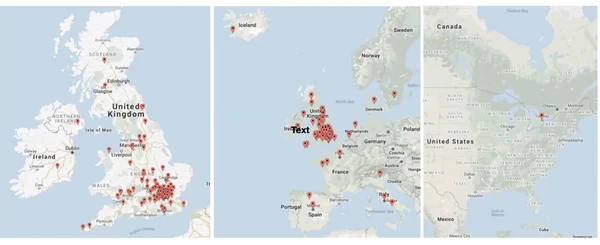

Working at Blue Zoo will never be the same

When the UK went into lockdown in March 2020, Blue Zoo had over 200 artists working in two London studios that had to switch to home-working in a matter of days. This presented a whole new challenge of continuing to animate long-form TV and short-form content with the number one priority of keeping all staff safe and well.
Fortunately, with the aim of constantly improving work/life balance, Blue Zoo has been embracing staff working-from-home for a number of years, so the technology was already tried and tested. This allows staff to remote-connect into their studio workstations without having to have expensive set-ups at home.
But the challenge was to go from a few people using this remote-desktop technology, to the entire studio, in about two weeks. The IT team pulled out all the stops and successfully managed to do this, pivoting from providing desktop IT support to diagnosing home internet issues.
Technology aside, this forced all the teams to change how they worked together, challenging senior team members to create new ways to communicate with their team and give feedback, proving unforeseen benefits.
“We've actually had some of our fastest comp reviews working remotely, due to the fact the Director or myself can pause, highlight and discuss a note at a speed which may not be possible when all sitting in a room with one monitor and one person driving the review.” Says Rhys Davidson, Lighting and Compositing Supervisor.
“Directing animation at Blue Zoo is now all done by Zoom. During group reviews, we encourage the animators to drop in and out, so that they aren't wasting time and can work in the background.” Says Will Cook, Animation Director on The Adventures of Paddington. “Team reviews can go on for up to 2 hours so we aim to maximise time.”
Whilst some teams have found remote working more productive, others have found it’s not come without its problems, as each part of the animation pipeline collaborate in different ways; some that are not conducive to Zoom meetings or asynchronous messaging.
“Our staff is what Blue Zoo is.” Says Tom Box, studio co-founder. “Everyone is different and we celebrate that. By allowing individuals to work according to their own working styles, we get the best out of everyone, rather than forcing them to conform to one person’s style at their detriment.”
What does this mean for the future of the studio? “It’s certainly shown us that we don’t all need to be in a central HQ to function successfully.” says Tom “whilst people have enjoyed commute-free days, they are really missing the personal element of collaboration and social parts of work-life that is part of our studio’s heart.”

Going forward the studio doesn’t see remote-working as something that needs to come to an end and can instead be embraced. “Our aims are simply to work with the best talent, making the best animation that people have enjoyed creating as much as the audience enjoys watching.” says Tom “so the blended model of working-from-home mixed with working in the studio is here to stay”.
“The change to all-studio remote working hasn't been without its challenges and we continue to learn from and adapt to those challenges.” Says Denise Green, Head of Productions.
“What does this mean for the future of Blue Zoo? That we continue to listen to and support the needs of our staff and, with some forward planning, we are in the very best position to (continue to) offer fantastic opportunities to talented individuals located near and far - and that's really exciting.”
Ultimately, it means things will never be the same again for the studio’s staff, opening up opportunities far outside of the studio’s base in London. This should mean great things for staff wellbeing, geographically inclusive recruitment and reduced environmental impact.
If you are interested in joining the Blue Zoo team, wherever you are located, check out the recently launched Blue Zoo Careers website.

